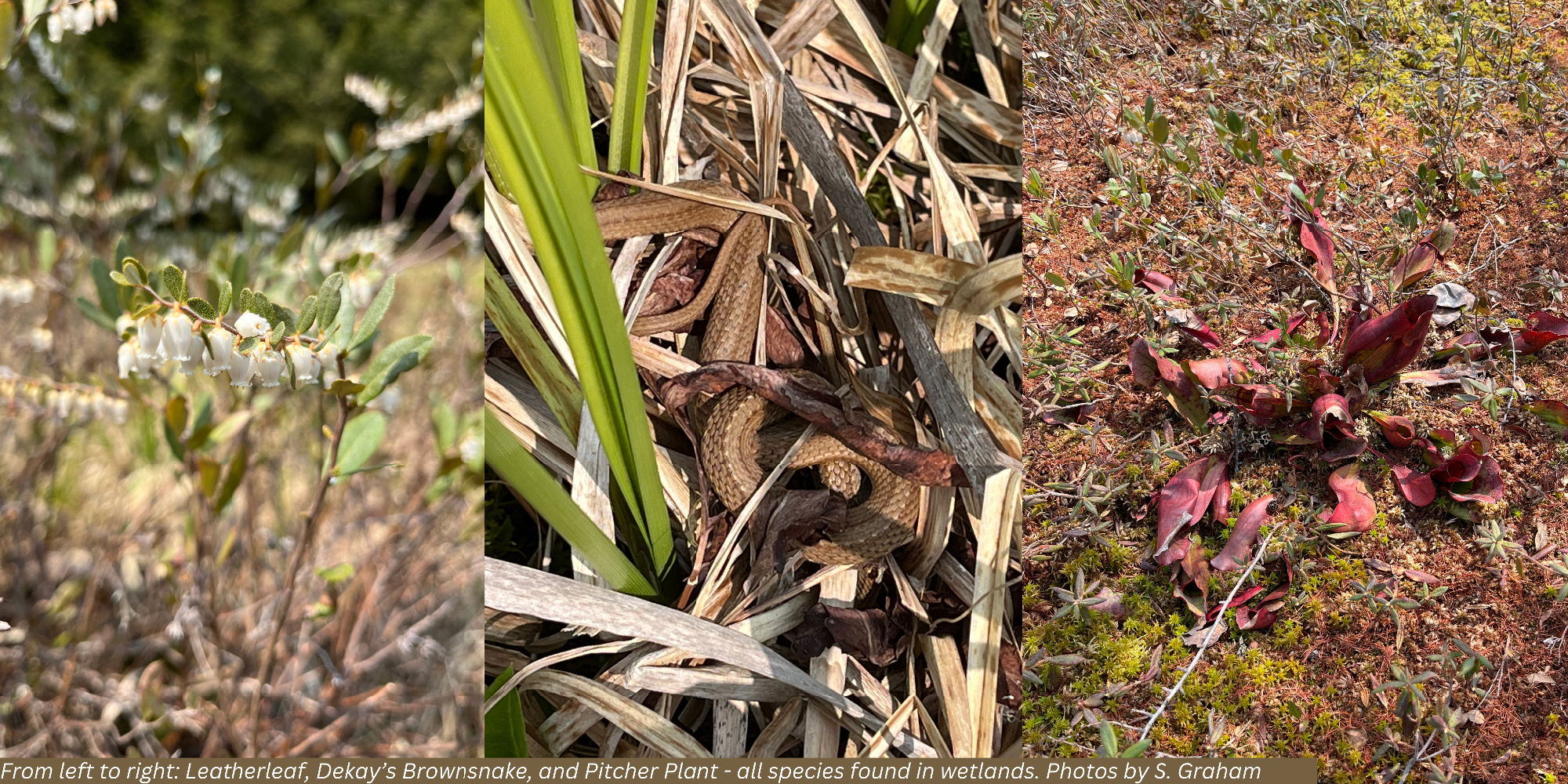
We collect basic website visitor information on this website and store it in cookies. We also utilize Google Analytics to track page view information to assist us in improving our website.
Written by: Summer Graham
Although often overlooked, wetlands are diverse and ecologically important ecosystems that play a crucial role in maintaining biodiversity, water quality, and providing various ecological services. Wetlands are often protected by policy from impacts of development and human activity, and for good reason. Wetlands are home to about 40% of species worldwide and are essential for providing both food and clean water.

Wetlands are defined as areas on the landscape that are saturated with water, either permanently or seasonally, resulting in the development of specific vegetation that is adapted to wet conditions. Canada is home to a wide range of wetland types, including marshes, swamps, bogs, and fens.
Marshes are wetlands with shallow water, often found along the edges of rivers, lakes, and coastlines. They often contain plants such as Cattails, native grasses like Canada Bluejoint, Water Lilies, and Pickerel Weed.
Swamps are wetlands characterized by standing water and dominated by trees and woody vegetation, which is how they differ from the open habitat of marshes. Similar to marshes, they can be freshwater or saltwater, depending on their location and the type of water they contain. The presence of trees tolerant of wet conditions, such as Black Ash, Eastern White Cedar, and Silver Maple can indicate a swamp environment.
Bogs are acidic wetlands with waterlogged, spongy ground. They are commonly surrounded by peat, a type of organic material that accumulates over time. Bogs are typically nutrient-poor and may have a distinctive plant community due to this fact, with species that gather nutrients from other sources or are adapted to the poor conditions. Bogs often support specialized vegetation like sphagnum moss, carnivorous plants like Pitcher Plant, and tree species such as Black Spruce.
Fens are also peat-forming wetlands but differ from bogs in that they receive water from sources other than precipitation, such as groundwater or surface water. Fens are less acidic than bogs and tend to have a higher nutrient content. Fens support a variety of plant life, including species like Tamarack, Bog Buckbean, and Cotton Grass.

Wetlands provide essential services to humans as well as being an integral part of the mosaic of ecosystems present on the Canadian landscape. Some of these ecological services include habitat for diverse flora and fauna, water filtration, flood control, and carbon storage. However, they are also vulnerable to human activities such as drainage, agriculture, and development, which can lead to habitat loss and degradation.
Just like any other natural habitat, wetlands face threats from human development and are removed or degraded where cities and towns now exist. You can help by returning these features to the landscape whenever possible. Rain gardens are one of the easiest ways to do this in an urban environment. By planting native wetland vegetation in a wet pocket of your yard, you can help slow the flow of water from your property, while filtering the water and supporting wildlife at the same time!
There are many online guides for creating rain gardens, try and find one for your location to ensure species recommended will be suitable. We’ve provided some links below to get you started.
Toronto and Region CA, Ontario: Complete guide to building and maintaining a rain garden
City of Guelph, Ontario: Sample rain garden design
Okanagan-Similkameen, British Columbia: Simple how-to
Calgary, Alberta: Calgary rain garden
University of Saskatchewan: Rain garden how-to
City of Brandon, Manitoba: All about water - rain garden
City of Charlottetown, PEI: How to create a rain garden
Looking to buy native wetland and rain garden species? Check out the Find a Native Plant Nursery Map here!

Additional reading
Ducks Unlimited Canada - Wetlands
Government of Canada - Wetlands
Join our email list to receive occasional updates about Network of Nature and ensure you get the news that matters most, right in your inbox.